Abstract
Plaque samples were obtained from tooth surfaces exhibiting typical lesions of root surface caries and were immediately cultured by a continuous anaerobic procedure. The bacterial composition of root caries flora was determined on individual samples. Representative isolates from each specimen were characterized by morphological and physiological criteria. In addition, fluorescent antibody reagents were used to confirm the identification of Streptococcus mutans and Actinomyces viscosus. The plaque samples could be divided into two groups on the basis of the presence or absence of S. mutans in the plaque. In group I plaques, S. mutans comprised 30 percent of the total cultivable flora. S. sanguis was either not found or was present in very low number. In group II plaques, S. mutans was not detected, and S. sanguis formed 48 percent of the total plaque flora. A. viscosus was the dominant organism in all plaque samples, accounting for 47 percent of the group I isolates and 41 percent of the group II isolates.
Full text
PDF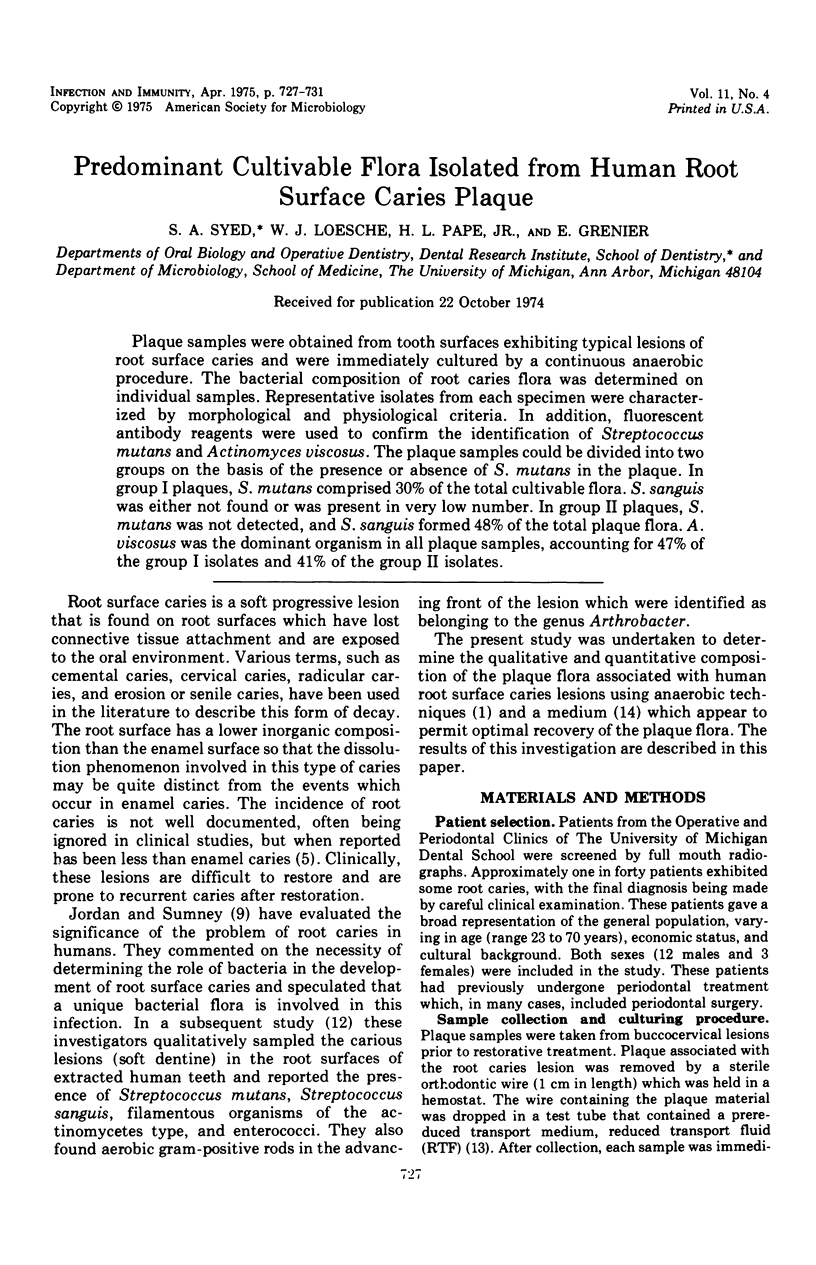
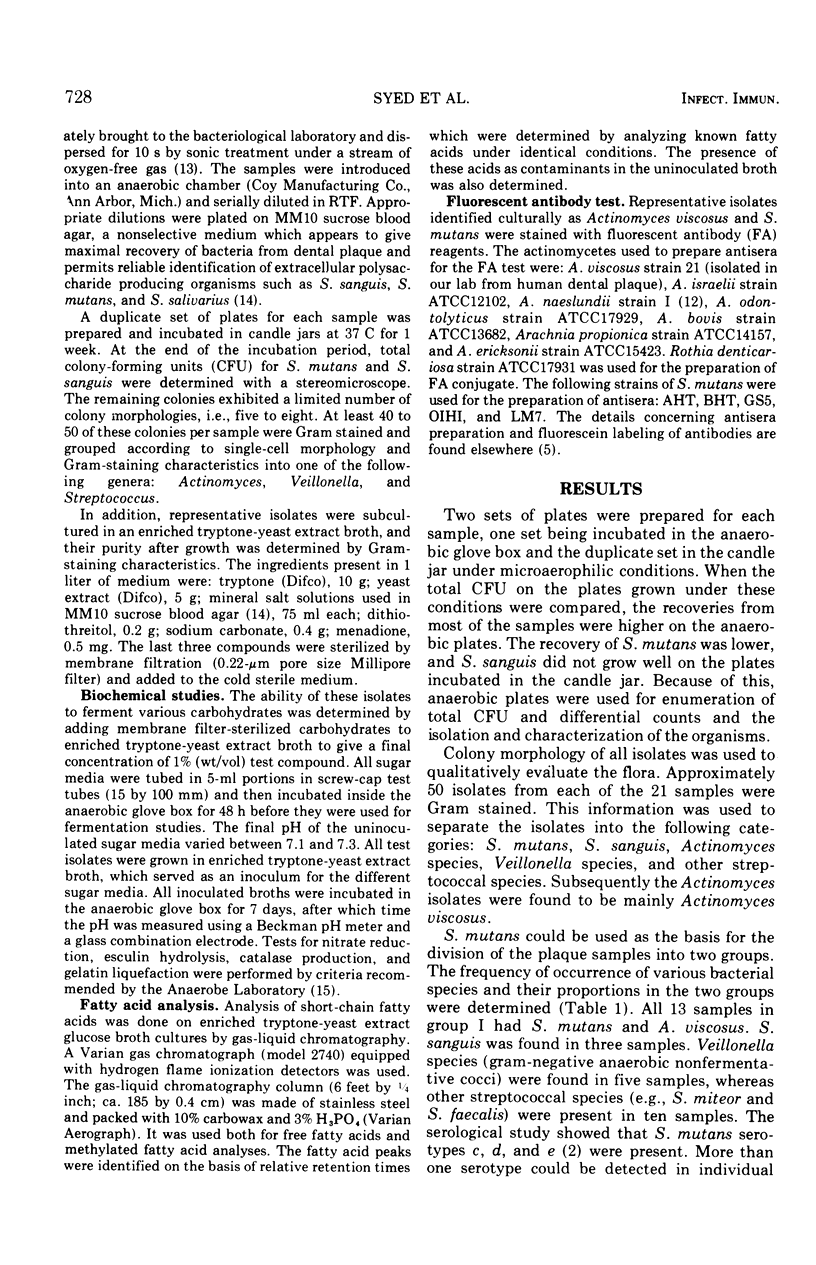
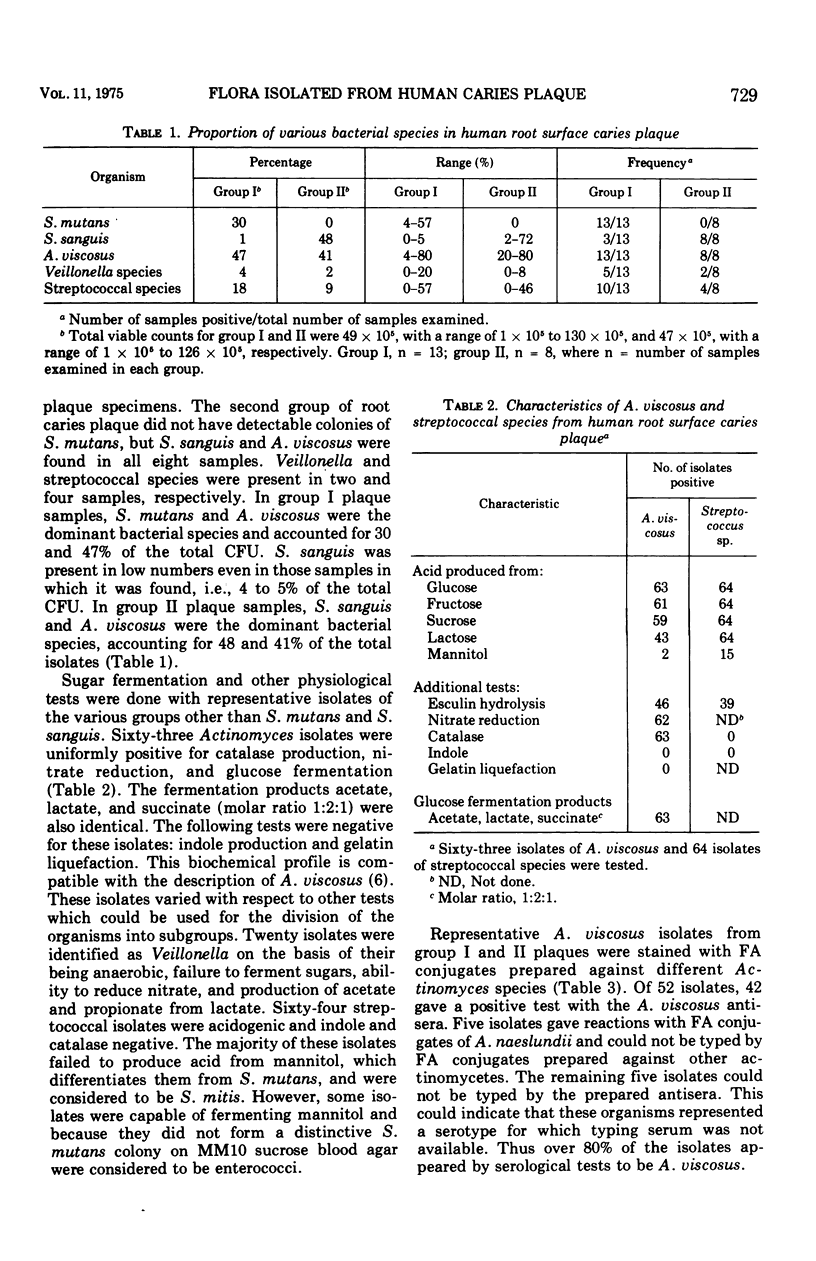
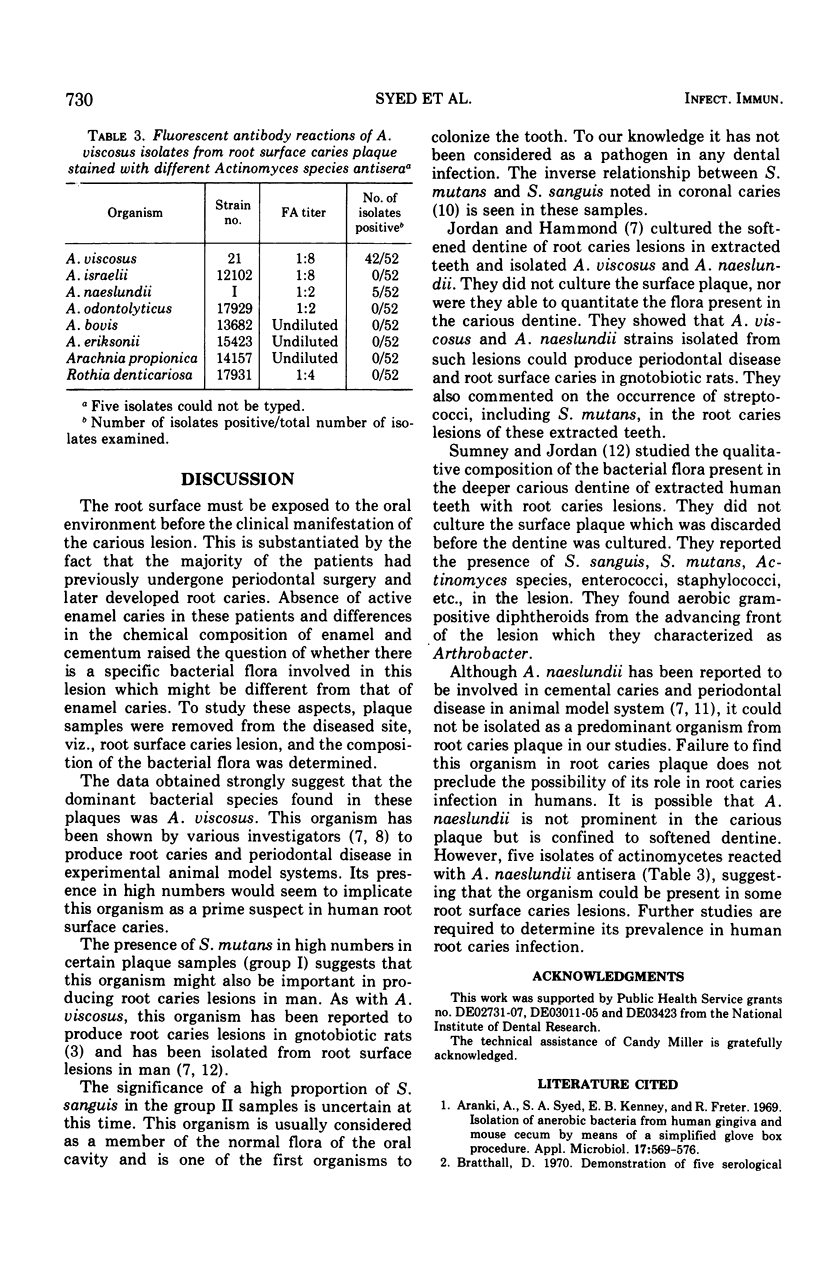
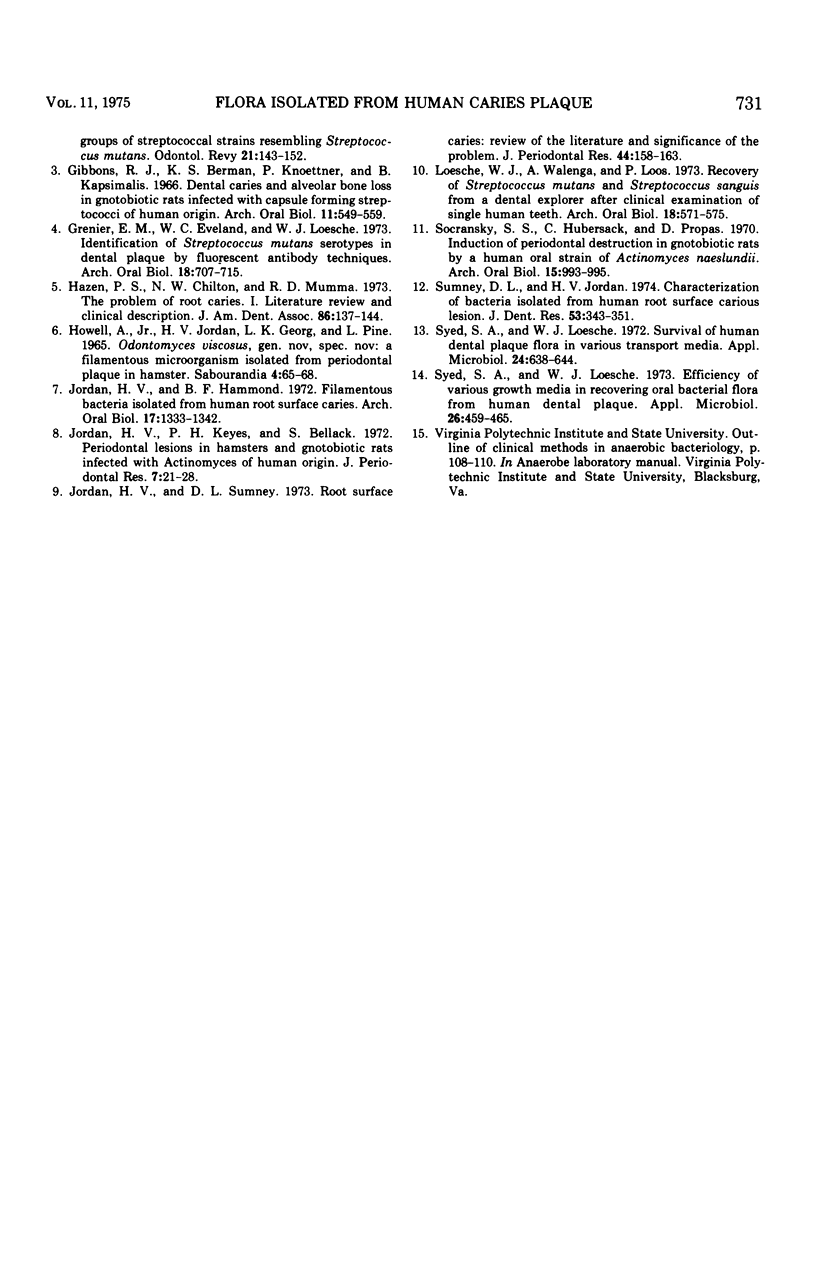
Selected References
These references are in PubMed. This may not be the complete list of references from this article.
- Arank A., Syed S. A., Kenney E. B., Freter R. Isolation of anaerobic bacteria from human gingiva and mouse cecum by means of a simplified glove box procedure. Appl Microbiol. 1969 Apr;17(4):568–576. doi: 10.1128/am.17.4.568-576.1969. [DOI] [PMC free article] [PubMed] [Google Scholar]
- Bratthall D. Demonstration of five serological groups of streptococcal strains resembling Streptococcus mutans. Odontol Revy. 1970;21(2):143–152. [PubMed] [Google Scholar]
- Gibbons R. J., Berman K. S., Knoettner P., Kapsimalis B. Dental caries and alveolar bone loss in gnotobiotic rats infected with capsule forming streptococci of human origin. Arch Oral Biol. 1966 Jun;11(6):549–560. doi: 10.1016/0003-9969(66)90220-2. [DOI] [PubMed] [Google Scholar]
- Grenier E. M., Eveland W. C., Loesche W. J. Identification of Streptococcus mutans serotypes in dental plaque by fluorescent antibody techniques. Arch Oral Biol. 1973 Jun;18(6):707–715. doi: 10.1016/0003-9969(73)90006-x. [DOI] [PubMed] [Google Scholar]
- Hazen S. P., Chilton N. W., Mumma R. D., Jr The problem of root caries. I. Literature review and clinical description. J Am Dent Assoc. 1973 Jan;86(1):137–144. doi: 10.14219/jada.archive.1973.0037. [DOI] [PubMed] [Google Scholar]
- Howell A., Jr, Jordan H. V., Georg L. K., Pine L. Odontomyces viscosus, gen. nov., spec. nov., a filamentous microorganism isolated from periodontal plaque in hamsters. Sabouraudia. 1965 Jun;4(2):65–68. doi: 10.1080/00362176685190181. [DOI] [PubMed] [Google Scholar]
- Jordan H. V., Hammond B. F. Filamentous bacteria isolated from human root surface caries. Arch Oral Biol. 1972 Sep;17(9):1333–1342. doi: 10.1016/0003-9969(72)90166-5. [DOI] [PubMed] [Google Scholar]
- Jordan H. V., Keyes P. H., Bellack S. Periodontal lesions in hamsters and gnotobiotic rats infected with actinomyces of human origin. J Periodontal Res. 1972;7(1):21–28. doi: 10.1111/j.1600-0765.1972.tb00627.x. [DOI] [PubMed] [Google Scholar]
- Jordan H. V., Sumney D. L. Root surface caries: review of the literature and significance of the problem. J Periodontol. 1973 Mar;44(3):158–163. doi: 10.1902/jop.1973.44.3.158. [DOI] [PubMed] [Google Scholar]
- Loesche W. J., Walenga A., Loos P. Recovery of Streptococcus mutans and Streptococcus sanguis from a dental explorer after clinical examination of single human teeth. Arch Oral Biol. 1973 Apr;18(4):571–575. doi: 10.1016/0003-9969(73)90078-2. [DOI] [PubMed] [Google Scholar]
- Socransky S. S., Hubersak C., Propas D. Induction of periodontal destruction in gnotobiotic rats by a human oral strain of Actinomyces naeslundii. Arch Oral Biol. 1970 Oct;15(10):993–995. doi: 10.1016/0003-9969(70)90095-6. [DOI] [PubMed] [Google Scholar]
- Sumney D. L., Jordan H. V. Characterization of bacteria isolated from human root surface carious lesions. J Dent Res. 1974 Mar-Apr;53(2):343–351. doi: 10.1177/00220345740530022701. [DOI] [PubMed] [Google Scholar]
- Syed S. A., Loesche W. J. Efficiency of various growth media in recovering oral bacterial flora from human dental plaque. Appl Microbiol. 1973 Oct;26(4):459–465. doi: 10.1128/am.26.4.459-465.1973. [DOI] [PMC free article] [PubMed] [Google Scholar]
- Syed S. A., Loesche W. J. Survival of human dental plaque flora in various transport media. Appl Microbiol. 1972 Oct;24(4):638–644. doi: 10.1128/am.24.4.638-644.1972. [DOI] [PMC free article] [PubMed] [Google Scholar]


